Abstract
1. The responses of individual pial arterioles and small arteries to perivascular injections of 5-hydroxytryptamine were studied in anaesthetized cats.
2. Pial arteriolar calibre was measured by a television image-splitting technique.
3. At normotension, the average response of pial vessels was dilatatory at injected 5-hydroxytryptamine concentrations between 10-10 and 10-4 M.
4. These pial vascular changes were, however, dependent upon the resting vessel calibre: those arterioles < 70 μm dilated universally, whereas small arteries ≥ 200 μm in resting diameter tended to constrict in response to 5-hydroxytryptamine.
5. The 5-hydroxytryptamine-induced dilatation of pial arterioles < 70 μm in resting calibre was directly dependent on mean arterial pressure, although no such relationship was observed with the larger cerebral vessels.
6. It is concluded that the specific cerebrovascular actions of 5-hydroxytryptamine are largely tone-dependent. The greater the resting tone of a pial arteriole, then the greater will be the tendency of that vessel to dilate in response to 5-hydroxytryptamine, and vice versa.
7. The direct vascular actions of 5-hydroxytryptamine are in contradistinction to the observed changes in cerebral tissue perfusion and it would therefore appear that the effects of this amine on cerebral metabolism and neuronal activity outweigh its cerebrovascular actions under physiological conditions.
Full text
PDF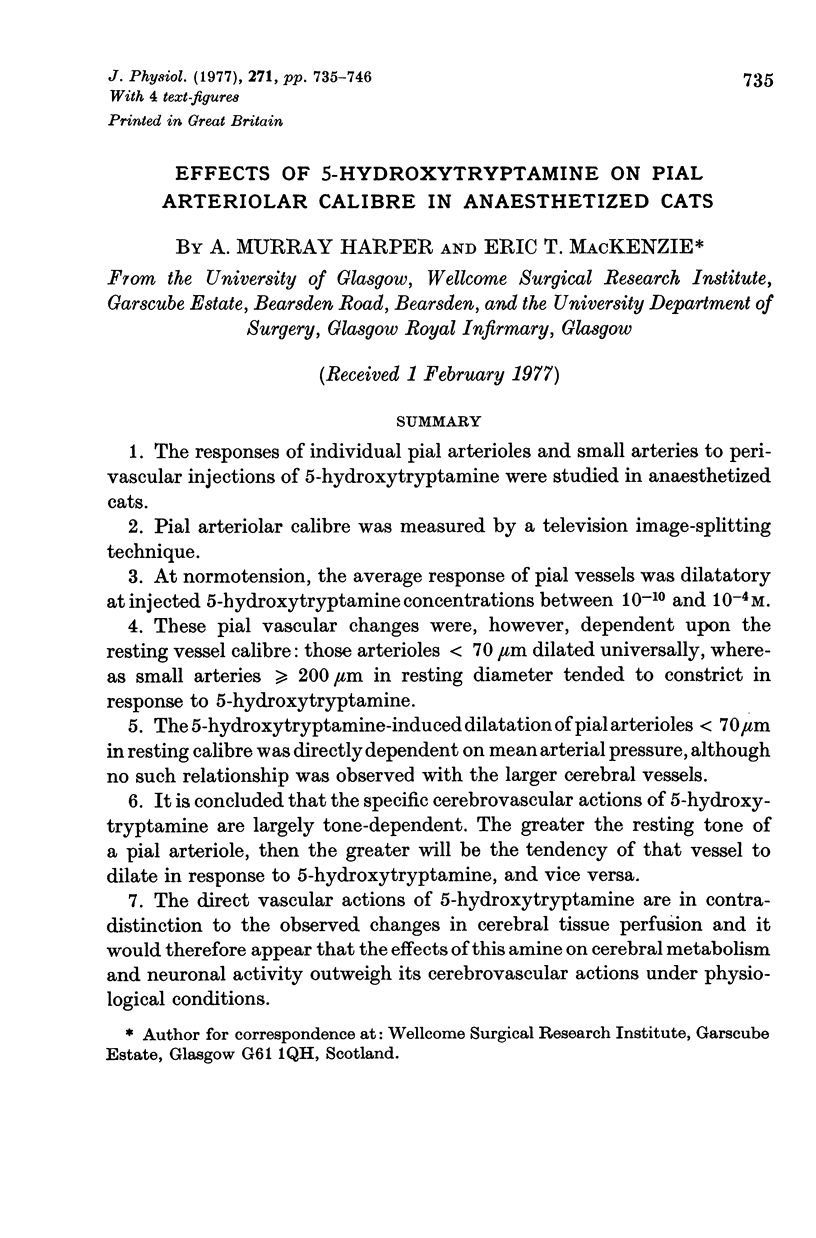
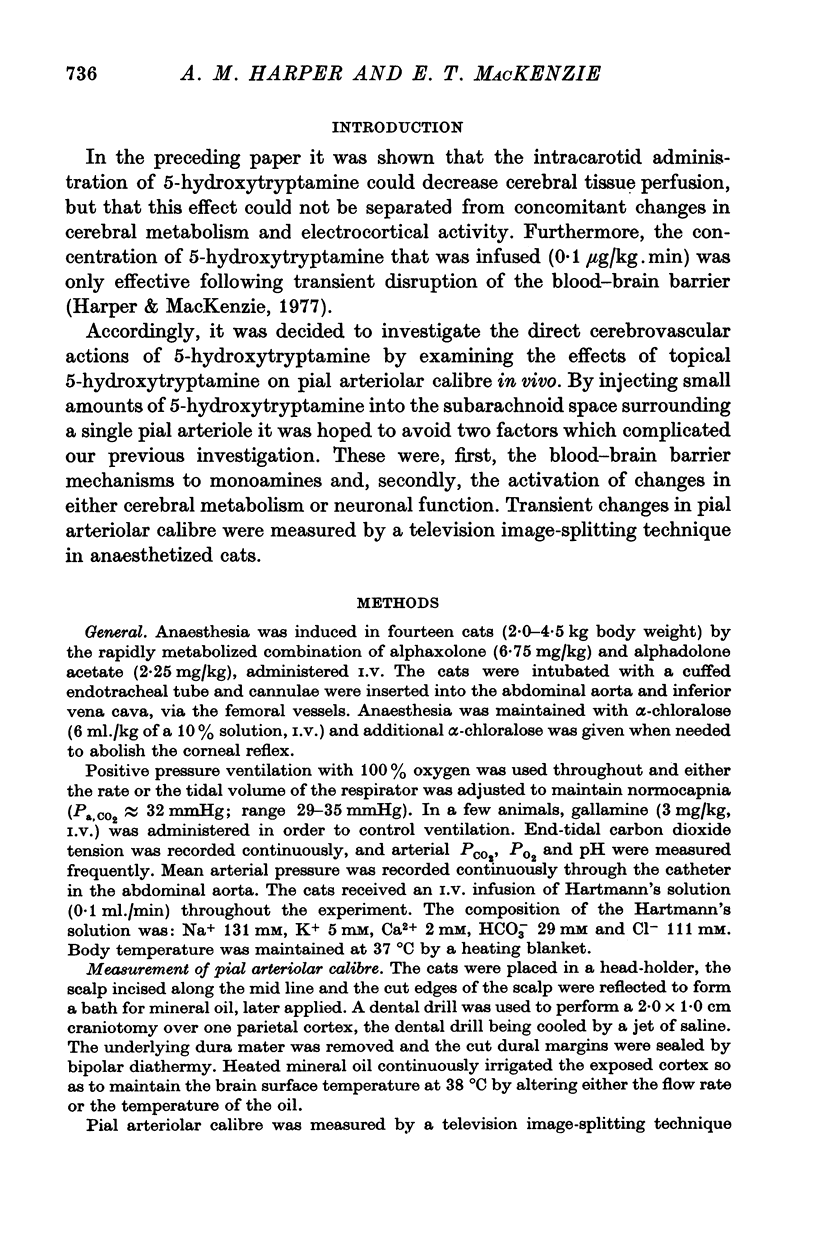
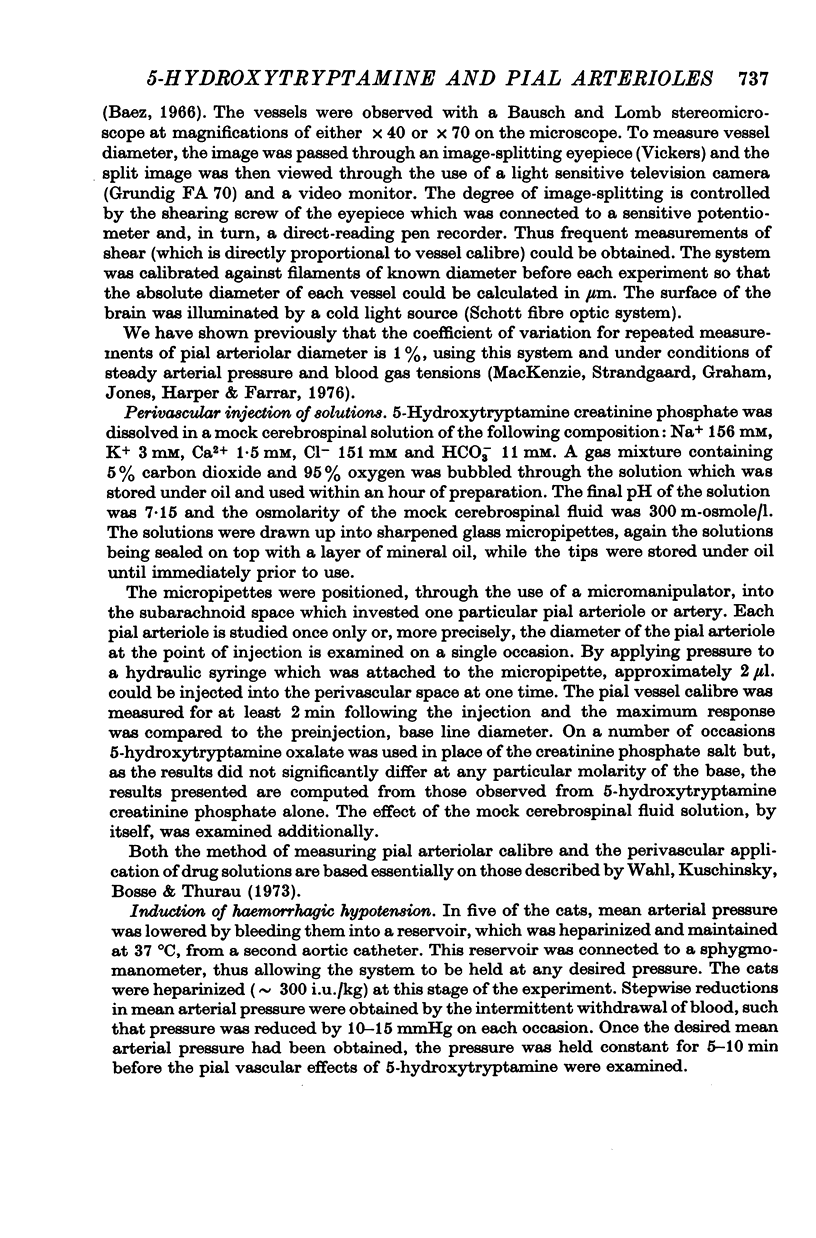
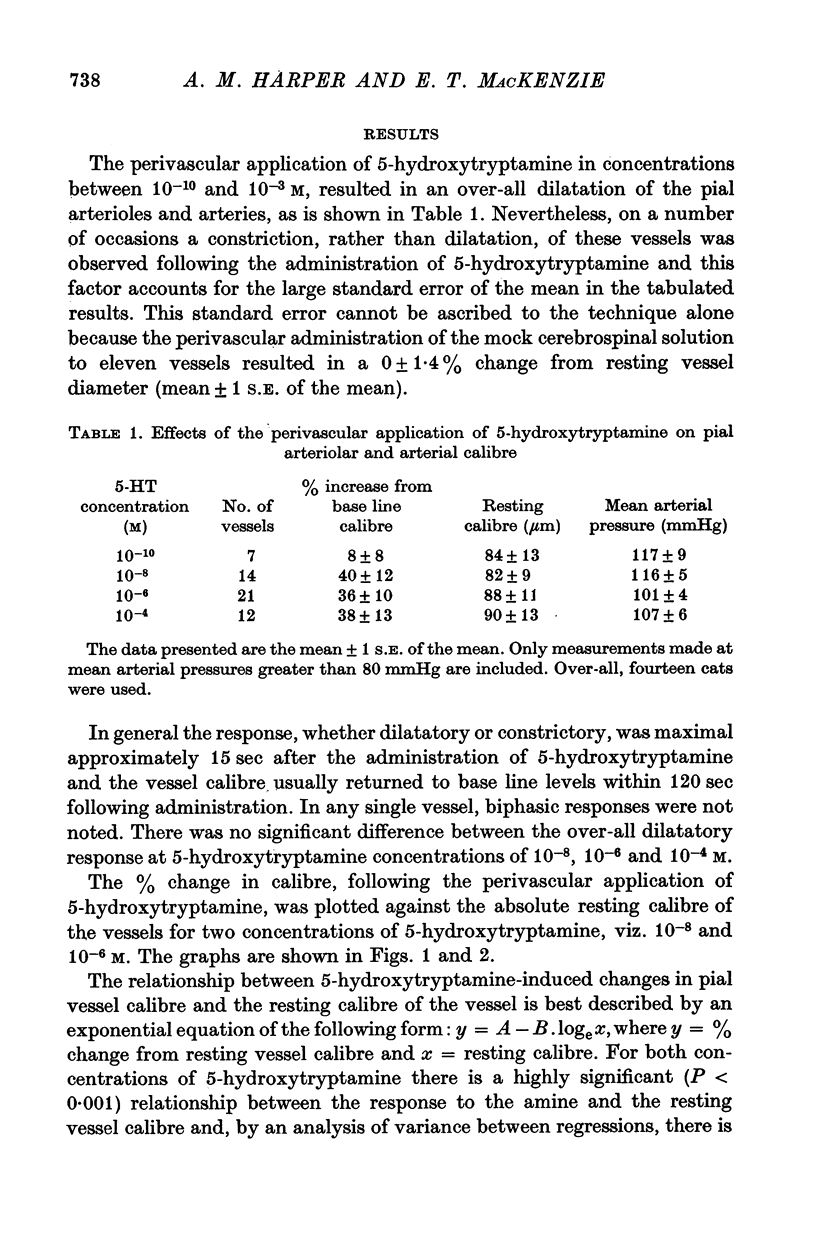
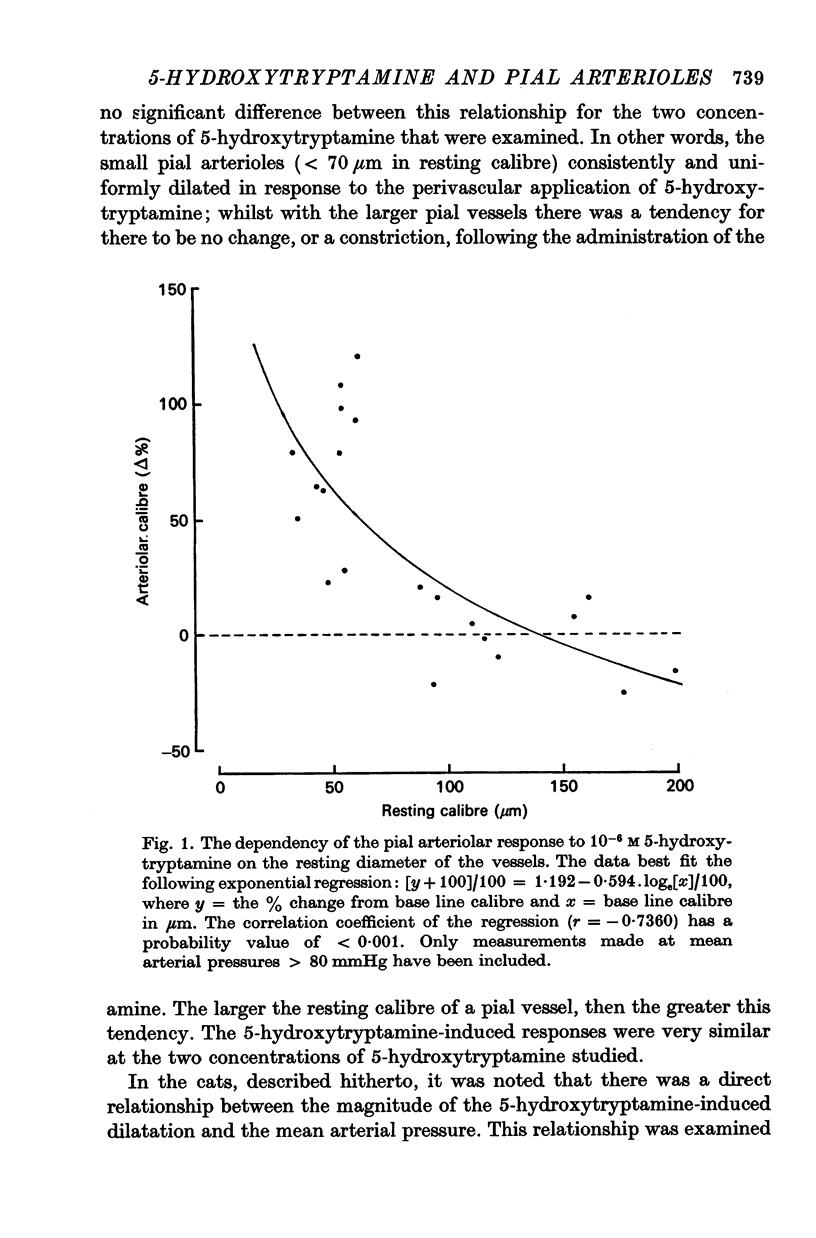
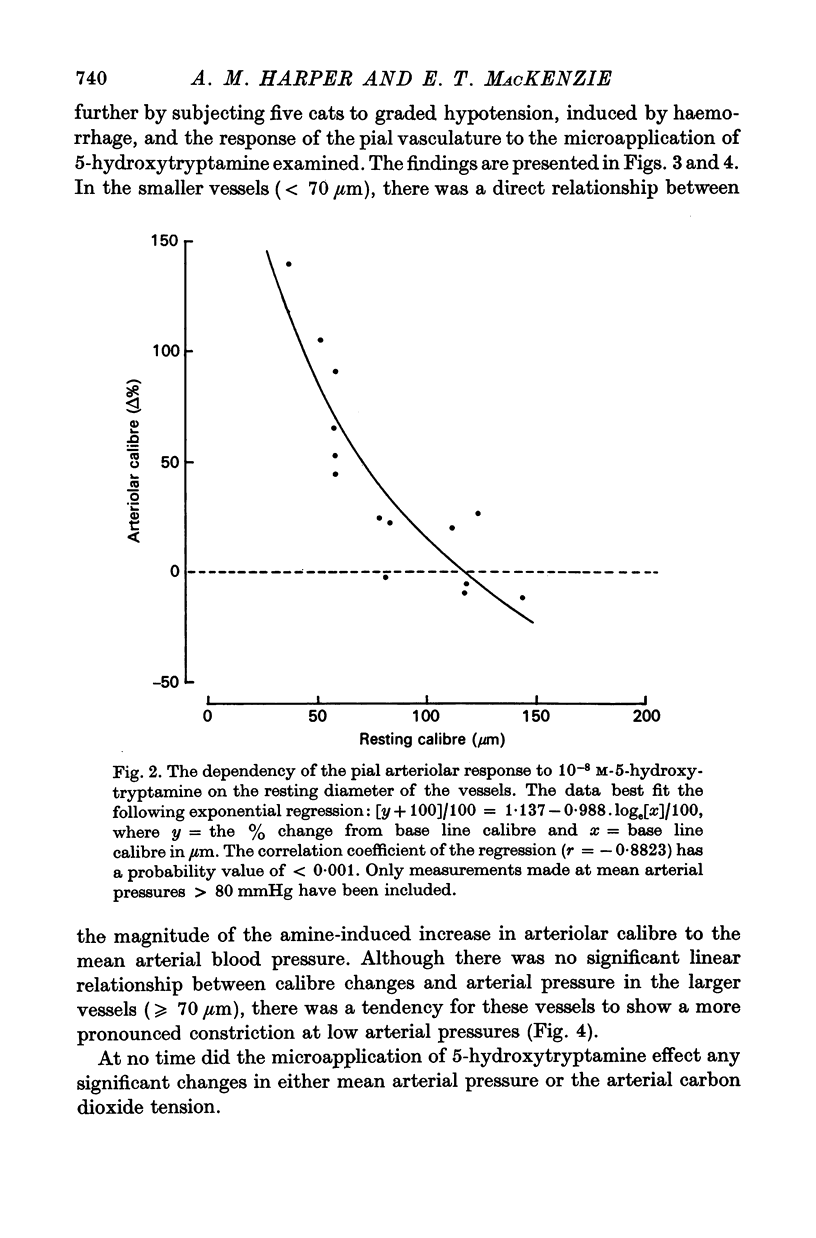
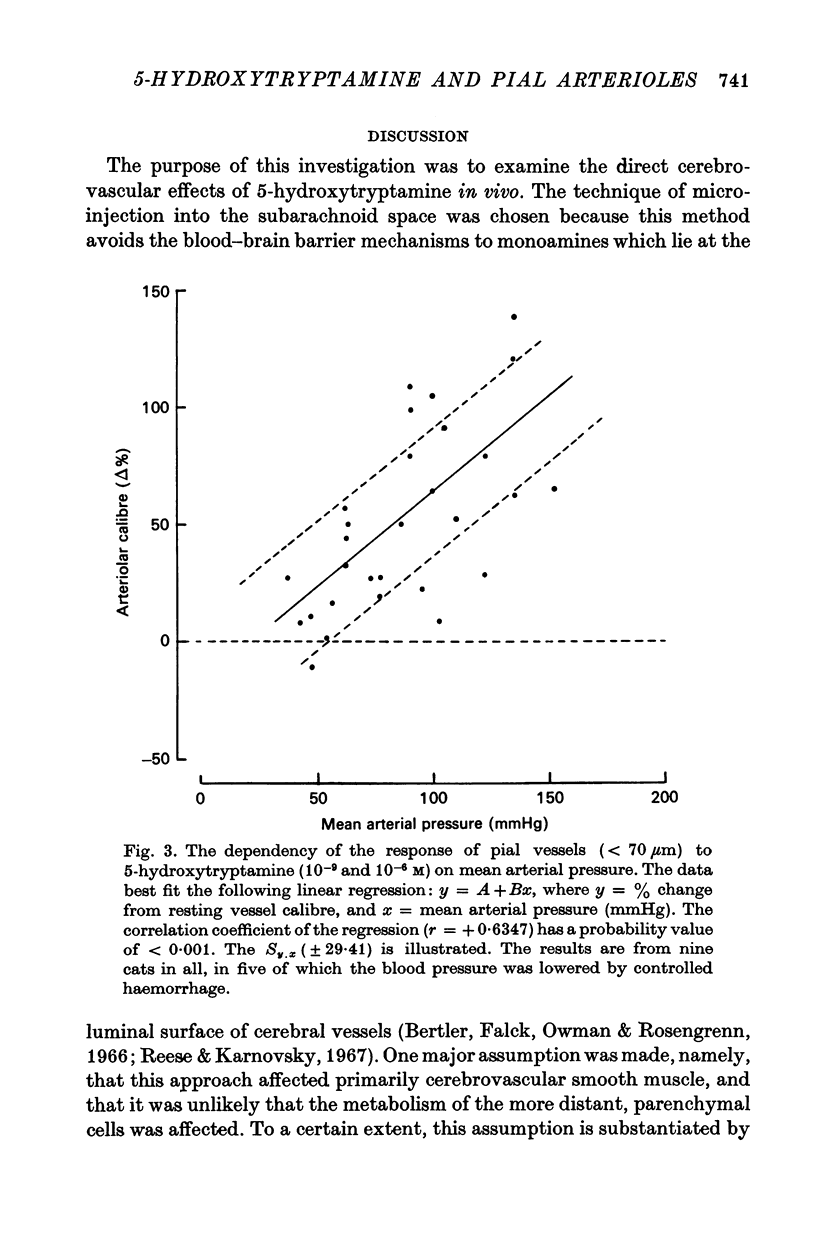
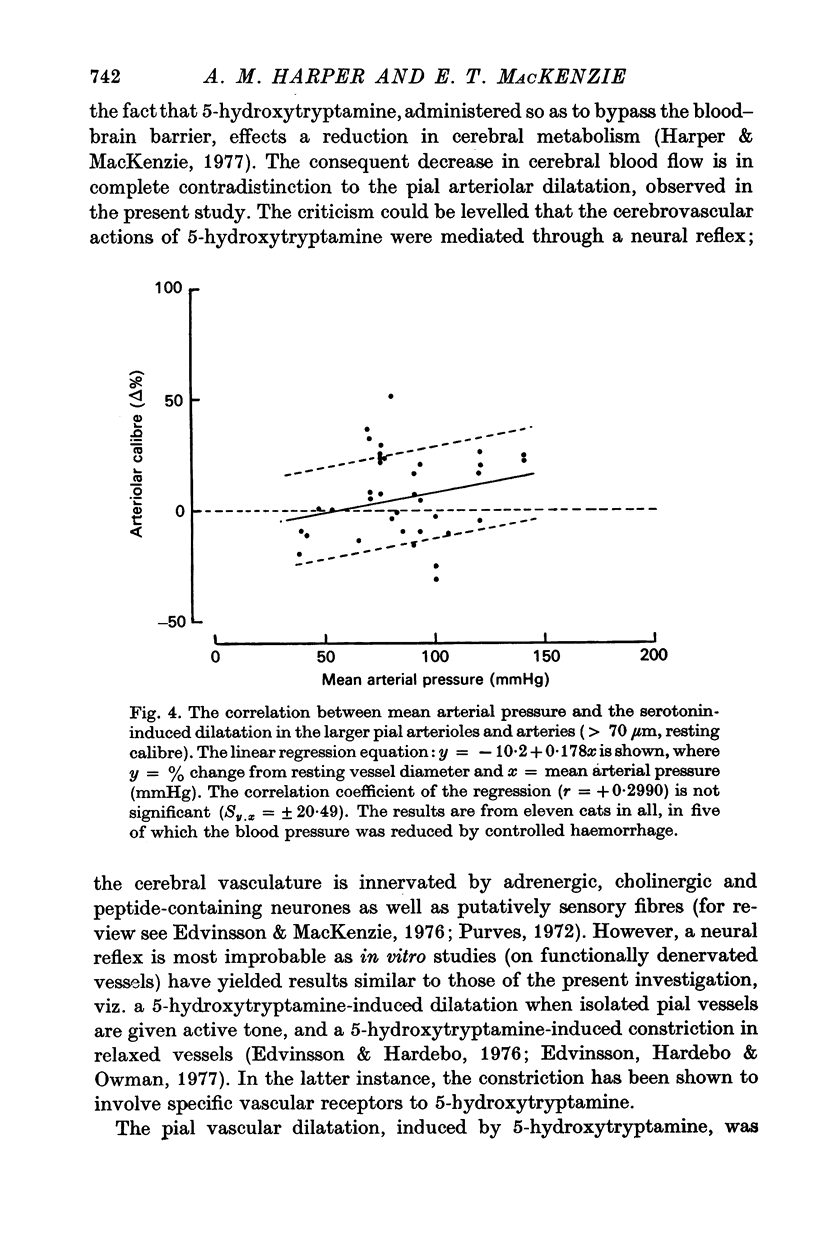
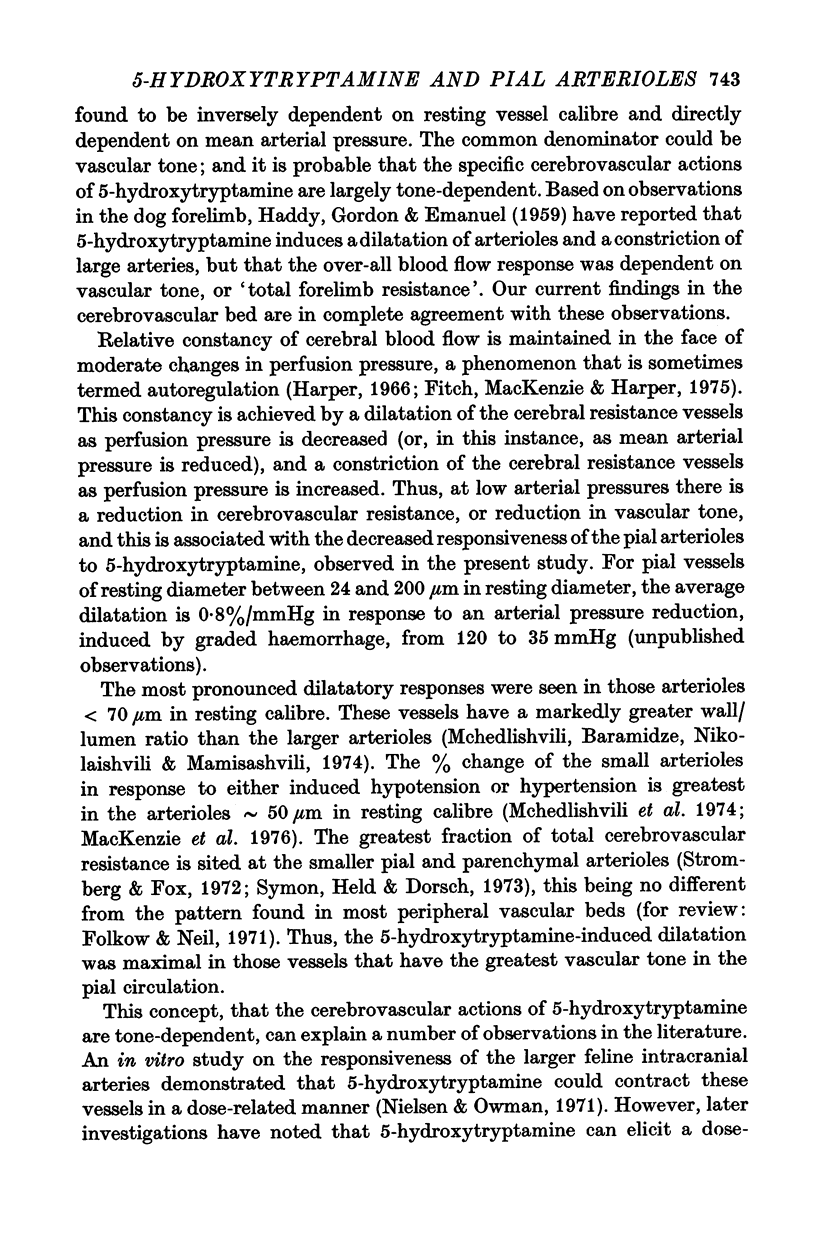


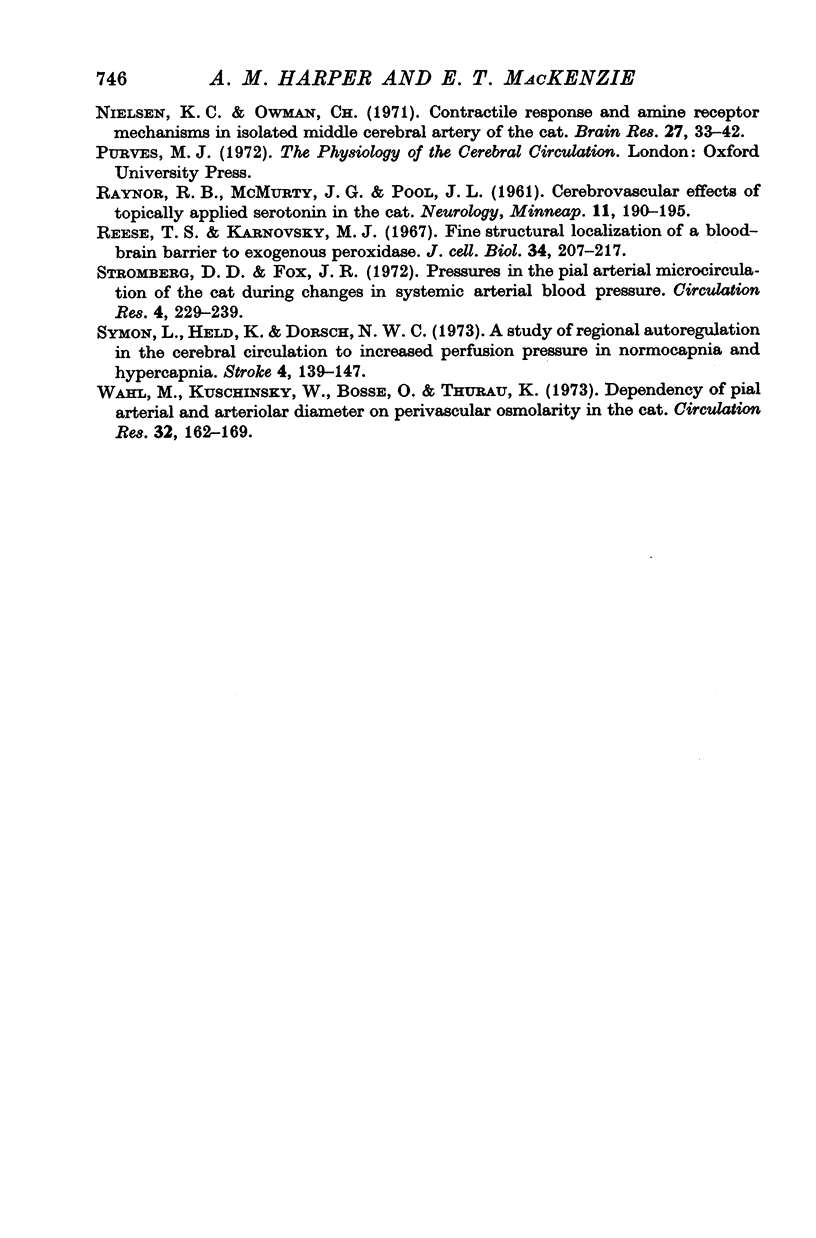
Selected References
These references are in PubMed. This may not be the complete list of references from this article.
- Baez S. Recording of microvascular dimensions with an image-splitter television microscope. J Appl Physiol. 1966 Jan;21(1):299–301. doi: 10.1152/jappl.1966.21.1.299. [DOI] [PubMed] [Google Scholar]
- Bell W. H., 3rd, Sundt T. M., Jr, Nofzinger J. D. The response of cortical vessels to serotonin in experimental cerebral infarction. J Neurosurg. 1967 Feb;26(2):203–212. doi: 10.3171/jns.1967.26.2.0203. [DOI] [PubMed] [Google Scholar]
- Bertler A., Falck B., Owman C., Rosengrenn E. The localization of monoaminergic blood-brain barrier mechanisms. Pharmacol Rev. 1966 Mar;18(1):369–385. [PubMed] [Google Scholar]
- Deshmukh V. D., Harper A. M. The effect of serotonin on cerebral and extracerebral blood flow with possible implications in migraine. Acta Neurol Scand. 1973;49(5):649–658. doi: 10.1111/j.1600-0404.1973.tb01337.x. [DOI] [PubMed] [Google Scholar]
- Edvinsson L., Hardebo J. E. Characterization of serotonin-receptors in intracranial and extracranial vessels. Acta Physiol Scand. 1976 Aug;97(4):523–525. doi: 10.1111/j.1748-1716.1976.tb10293.x. [DOI] [PubMed] [Google Scholar]
- Ekström-Jodal B., von Essen C., Häggendal E., Roos B. E. Effects of 5-hydroxytryptamine on the cerebral blood flow in the dog. Acta Neurol Scand. 1974;50(1):27–38. doi: 10.1111/j.1600-0404.1974.tb01344.x. [DOI] [PubMed] [Google Scholar]
- Fitch W., MacKenzie E. T., Harper A. M. Effects of decreasing arterial blood pressure on cerebral blood flow in the baboon. Influence of the sympathetic nervous system. Circ Res. 1975 Nov;37(5):550–557. doi: 10.1161/01.res.37.5.550. [DOI] [PubMed] [Google Scholar]
- HADDY F. J., GORDON P., EMANUEL D. A. The influence of tone upon responses of small and large vessels to serotonin. Circ Res. 1959 Jan;7(1):123–130. doi: 10.1161/01.res.7.1.123. [DOI] [PubMed] [Google Scholar]
- Harper A. M. Autoregulation of cerebral blood flow: influence of the arterial blood pressure on the blood flow through the cerebral cortex. J Neurol Neurosurg Psychiatry. 1966 Oct;29(5):398–403. doi: 10.1136/jnnp.29.5.398. [DOI] [PMC free article] [PubMed] [Google Scholar]
- Harper M. A., MacKenzie E. T. Cerebral circulatory and metabolic effects of 5-hydroxytryptamine in anesthetized baboons. J Physiol. 1977 Oct;271(3):721–733. doi: 10.1113/jphysiol.1977.sp012022. [DOI] [PMC free article] [PubMed] [Google Scholar]
- MacKenzie E. T., Strandgaard S., Graham D. I., Jones J. V., Harper A. M., Farrar J. K. Effects of acutely induced hypertension in cats on pial arteriolar caliber, local cerebral blood flow, and the blood-brain barrier. Circ Res. 1976 Jul;39(1):33–41. doi: 10.1161/01.res.39.1.33. [DOI] [PubMed] [Google Scholar]
- Nielsen K. C., Owman C. Contractile response and amine receptor mechanisms in isolated middle cerebral artery of the cat. Brain Res. 1971 Mar 19;27(1):33–42. doi: 10.1016/0006-8993(71)90370-2. [DOI] [PubMed] [Google Scholar]
- RAYNOR R. B., McMURTRY J. G., POOL J. L. Cerebrovascular effects of topically applied serotonin in the cat. Neurology. 1961 Mar;11:190–195. doi: 10.1212/wnl.11.3.190. [DOI] [PubMed] [Google Scholar]
- Reese T. S., Karnovsky M. J. Fine structural localization of a blood-brain barrier to exogenous peroxidase. J Cell Biol. 1967 Jul;34(1):207–217. doi: 10.1083/jcb.34.1.207. [DOI] [PMC free article] [PubMed] [Google Scholar]
- Stromberg D. D., Fox J. R. Pressures in the pial arterial microcirculation of the cat during changes in systemic arterial blood pressure. Circ Res. 1972 Aug;31(2):229–239. doi: 10.1161/01.res.31.2.229. [DOI] [PubMed] [Google Scholar]
- Symon L., Held K., Dorsch N. W. A study of regional autoregulation in the cerebral circulation to increased perfusion pressure in normocapnia and hypercapnia. Stroke. 1973 Mar-Apr;4(2):139–147. doi: 10.1161/01.str.4.2.139. [DOI] [PubMed] [Google Scholar]
- Wahl M., Kuschinsky W., Bosse O., Thurau K. Dependency of pial arterial and arteriolar diameter on perivascular osmolarity in the cat. A microapplication study. Circ Res. 1973 Feb;32(2):162–169. doi: 10.1161/01.res.32.2.162. [DOI] [PubMed] [Google Scholar]


